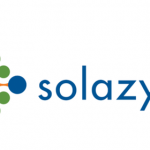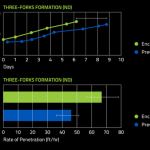Solazyme is Trading Below Cash; Should You Buy?

When it comes to traditional biotech investing — that is, biotech stocks in healthcare — it’s not uncommon for a company to fall dramatically after a negative outcome from a binary event, such as a failed clinical trial. In some instances, development-stage companies with no products on the market and few revenue streams can see their market value fall below their cash balance. Investors might be inclined to call out Mr. Market’s overreaction, seeing value despite the unsuccessful outcome, and be rewarded with a less risky entry point for a long-term position.
Today, biotechnology is no longer confined to healthcare applications; it is now able to offer its advantages to industrial, environmental, and a wide variety of other industries. Take renewable oil producer Solazyme as an example. While the technology platforms, products, and markets might have changed, the first wave of development-stage industrial biotech stocks have been treated eerily similar to their healthcare counterparts. It makes sense, too (for now, anyway).
The binary events now concern successfully building and ramping up manufacturing capacity for unproven fermentation platforms on strict timelines (commercializing the technology), rather than hitting primary and secondary end points in clinical trials. Collaboration revenue offers an important early lifeline for both types of biotechs. And although industrial companies tend to have at least some product revenue each quarter, company wide operating costs generally significantly outweigh the benefits for development-stage healthcare and industrial companies alike.
Unfortunately for investors, Solazyme’s flunked its binary event, and its share price was slashed significantly after the company pivoted its commercialization strategy. The company has recently traded just above a $200 million market valuation, which is well below the $250 million cash balance the company held at the end of September. Should investors be intrigued and consider this a buying opportunity?
Buy, buy, buy?
The fact that Solazyme’s market cap passed below the company’s reported cash balance at the end of September might tempt you to pull the trigger, but that alone doesn’t provide enough information to make a sound investment decision. Why not? Here are a few things to consider:
- Management expects to end the year with more than $200 million in cash . That makes sense considering the company’s historical burn rate has hovered near $30 million-$35 million. The guidance also accounts for costs that will be incurred during the fourth quarter to continue toiling away at the company’s two manufacturing facilities and go all-in on market development efforts, which may not be adequately accounted for in historical burn rates. The company won’t use all $200 million in cash in 2015, but the cash balance this time next year could very well be hovering near $100 million or less.
- Solazyme needs to reel in total operating costs . Management pivoted how it will generate revenue, but still needs to pivot how it spends money. Consider that the company will realize roughly $70 million in total revenue in 2015, excluding any product revenue from its largest manufacturing facility in Moema, Brazil. However, the company has realized $185 million in total operating costs in the previous 12 months. Even in an optimistic scenario, that gap might not close until 2017.
- Market development will determine success . Solazyme should realize a positive product gross margin in 2015, but that will only be significant if markets open up and enable substantially larger volumes of production. If opportunities with a realistic and visible path to company wide profitability don’t emerge quickly enough, then it’s not crazy to wonder if Solazyme will be around at the end of the decade.
It’s pretty clear that Solazyme will use its current cash reserves before it ever generates positive earnings, but to woo Wall Street, the company only needs to demonstrate that there are enough customers demanding its products to enable profitability. While it will be difficult, that capability could be demonstrated sooner than most think.
What investors should actually focus on
Investors need to focus not on the market cap-to-cash balance ratio, but instead on how much value is generated when Solazyme spends its existing cash. Reducing overhead and operating expenses will be critical, as will continued investments in optimizing the technology platform, but the top priority will be developing markets for its three highest-margin product portfolios: Algenist cosmetics, Encapso lubricants for oil and gas drilling, and AlgaVia food ingredients.
Algenist: The company’s highest-value product portfolio, Algenist, increased its store count by 40% in the third quarter. Algenist is on track to reach $26 million in revenue for 2014, which would represent a 30% growth rate over 2013. Assuming it grows by its historical rate of 20% in 2015, the company will generate $31.2 million in revenue from the brand. That’s not bad, especially considering the nearly 70% gross margin, but it’s simply too small of an opportunity to carry the weight on its own.
Encapso: Investors have heard about the benefits of using Encapso lubricants in oil and gas well drilling compared to other types of mud for several quarters now, but they aren’t seeing much initial demand for the product. That is evidenced by quarterly results, the fact that the largest announced supply agreement is for only 3,000 metric tons annually, and management’s low expectations for 2015.
Image source: Solazyme.
As I noted previously , the manufacturing facility in Clinton, Iowa, might only contribute approximately $16 million in product revenue in 2015, almost entirely from Encapso. However, the company likely won’t realize the targeted gross margin of 50% for Encapso products because they’ll be manufactured with non-optimized capacity. Increasing the marketing barrage (and determining why drillers aren’t interested) will be critical for 2015.
AlgaVia: We have seen a lot of Solazyme at food conferences and have heard a lot about potential customers testing AlgaVia food ingredients, but we have yet to see it show up on the top or bottom lines. AlgaVia could be the most important portfolio for the company and investors. Why? It comes with the rare combination of high gross margins and massive markets. Of course, without willing buyers the potential opportunity doesn’t mean much. Investors won’t be able to confidently factor food ingredients into the company’s long-term potential until it demonstrates substantiated traction or announces major supply agreements.
What should investors do?
It might be tempting to invest in Solazyme after seeing a market cap below its current cash balance, but investors should take a deep breath and consider the big picture. Rather than focus on the ratio, investors need to monitor how much value is created when the company spends its cash over the next few quarters. Solazyme faces a tough road ahead in its quest to develop markets for its highest-value products, which would then enable the profitable production of lower value commodity products. Can the company successfully develop markets before it needs to raise more cash?
If you feel the company’s technology platform offers more potential than Wall Street is giving it credit for, then you could be rewarded in the long term. However, I would only take a small position now and only increase it when real traction is demonstrated for its highest-value product portfolios.
1 great stock to buy for 2015 and beyond
Solazyme’s trajectory will take a hit in 2015, but it’s shaping up to be another great year for stocks. But if you want to make sure that 2015 is your best investing year ever, you need to know where to start. That’s why The Motley Fool’s chief investment officer just published a brand-new research report that reveals his top stock for the year ahead. To get the full story on this year’s stock — completely free — simply click here .
The article Solazyme is Trading Below Cash; Should You Buy? originally appeared on Fool.com.
Maxx Chatsko has no position in any stocks mentioned.
Check out his
personal portfolio,CAPS page,previous writing for The Motley Fool, or his work withSynBioBeta to keep up with developments in the synthetic biology field.
The Motley Fool owns shares of Solazyme. Try any of our Foolish newsletter services
. We Fools may not all hold the same opinions, but we all believe that
considering a diverse range of insights
makes us better investors. The Motley Fool has a
.
Copyright © 1995 – 2014 The Motley Fool, LLC. All rights reserved. The Motley Fool has a disclosure policy .
The views and opinions expressed herein are the views and opinions of the author and do not necessarily reflect those of The NASDAQ OMX Group, Inc.
Link –
Solazyme is Trading Below Cash; Should You Buy?


